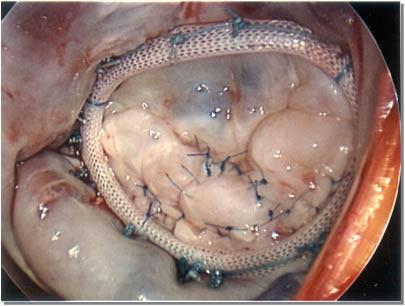Surgeon Q&A: Top 4 Facts About Mitral Valve Chords
Written By: Adam Pick, Patient Advocate, Author & Website Founder
Medical Expert: Robert Saeid Farivar, MD, Chief of Cardiac Surgery, Saint Alphonsus Health
Page Last Updated: June 6, 2025
I recently received a great question from Sandy about mitral regurgitation and her mitral chords, also known as mitral chordae.
In her email, Sandy writes, “Hi Adam, I was recently diagnosed with mitral regurgitation after my doctor heard a murmur. I understand that I have an issue with my mitral chords. But, I’m not really sure what that means. I didn’t see much on your site about this. Any thoughts for me?”

To help Sandy (and all of us) learn more about mitral valve chords, I reached out to Dr. Robert Saeid Farivar, a leading heart valve surgeon at Saint Alphonsus Heart Institute in Boise, Idaho.
So you know, Dr. Farivar and his team have successfully treated many patients in our community including Tammi Gunwall and Julie McDonald-Lundgren. Here are the highlights from my exchange with Dr. Farivar.
Question #1 – What are the mitral valve chords? What do they do?
The mitral valve has five parts: 1) the leaflets, 2) the annulus, 3) the chords (or chord), 4) the papillary muscles and 5) the ventricle. All these parts are a sophisticated suspension system for the leaflets to open-and-close effectively.
Question #2 – What can go wrong with the chords?
Dysfunction of the chords can occur at any level. The chords can rupture. This may occur due to infection or prolonged elongation (perhaps due to collagen disorders, some known and some unknown).
Question #3 – What are the risks associated with dysfunctional chords?
When the mitral chords rupture, they lead to leak blood. This is called mitral regurgitation and can lead to symptoms including shortness of breath, fatigue and heart palpitations.
Question #4 – How do surgeons, like you, fix this issue?
Often the mitral valve chords can be fixed. One type of mitral valve repair involves removing the ruptured chords and attached leaflet segments, repairing it and placing a mitral ring (also known as an annuloplasty ring).

Other repairs can including transferring good chords, or commonly in the case of anterior leaflet problems, attaching gore-tex neochords. About 25% of my patient cases require some chord repair but approximately 75% have ruptured chords.

I hope that helped Sandy (and perhaps you) learn a little more about mitral chords. I know it helped me. Many thanks to Dr. Farivar for taking the time to share his clinical expertise and research with our community.
Related Links:
- Tammy, Dr. Farivar’s Patient, Celebrates Her 10th Heart Valve Anniversary
- Ask Dr. Farivar: Will The CardiaMend Patch Stop Post-Op Atrial Fibrillation?
Keep on tickin!
Adam
|
Monde Nyambe says on June 16th, 2017 at 6:15 am |
|
Thanks adam for this valueable information. I have lived 30 years with rhematic heart disease. l have be on benzathine pennicillin jabs, but in the last 10 yrs i had to add lasix, slow k & digoxin to my drug sheet. I may be getting some work done this year. So i appreciate any information i can get about heart treatment options. |
 |













